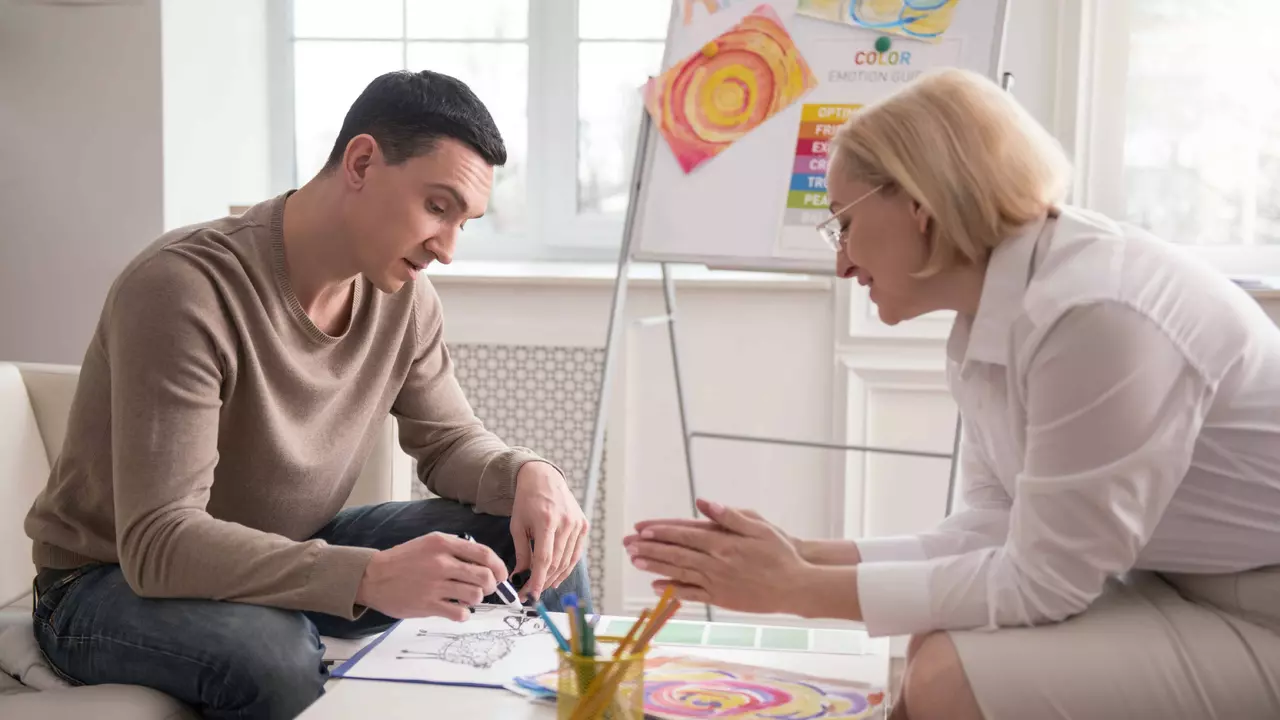Art Therapy: Simple Creative Tools to Improve Mood and Stress
You don’t have to be an artist to get real mental-health gains from art therapy. It’s not about making masterpieces. It’s about using color, texture, and movement to express feelings that are hard to say out loud.
Art therapy is a form of therapy where making art helps you explore emotions, lower stress, and build coping skills. A trained art therapist guides the process, but many techniques work well at home. Clinical work shows art-based approaches help people with anxiety, depression, chronic illness, and trauma when used along with other care.
How art therapy works
Art therapy taps into nonverbal parts of the brain. Creating gives you a safe way to externalize thoughts and feelings. The therapist helps you look at the work, notice patterns, and connect images to life events or behaviors. That reflection is where insight and change often happen.
Materials matter less than the process. Pencil, markers, scraps of paper, or clay are enough. The focus is on doing, not judging. That lowers the pressure many people feel in talk-only therapy.
Try simple art therapy exercises at home
If you want to try this on your own, start with short, guided activities. Try a 10-minute free-draw session: put on a timer, pick a color that feels like your mood, and draw without planning. Don’t erase—let lines stay. Afterward, write one sentence about what you noticed.
Other easy exercises: make a collage of images that match how you feel, paint a single color to represent calm, or do a ‘‘body map’’—outline your shape on paper and mark where you feel tension or ease. Coloring mandalas helps reduce anxiety. Keep sessions short and regular—10–20 minutes, three times a week makes a difference for many people.
Use art to track progress. Save pieces in a folder and look back after a month. You’ll notice shifts in color, space, and detail that often match mood changes.
When you need more structure or deeper work, find a credentialed art therapist (look for credentials like ATR or equivalent in your country). Ask about their training, whether they work with your issue (trauma, grief, chronic pain), and if they offer teletherapy. A first session usually includes a short intake, a simple art task, and a chat about goals.
Art therapy isn’t a replacement for urgent mental health care. If you have suicidal thoughts, are in crisis, or feel unsafe, contact emergency services or a crisis line immediately. For ongoing severe symptoms, combine art therapy with medical care or talk therapy.
Want a quick starter? Grab a pen and a piece of paper. Set a two-minute timer and draw your mood as a shape. No rules. After the timer ends, name the shape aloud and try one deep breath. Small steps build momentum.

The Benefits of Art Therapy in Alcoholism Treatment
Well, who would've thought that a splash of paint could be the secret weapon against the bottle! Art therapy, my friends, is proving to be a real game changer in the fight against alcoholism. Unleashing the inner Picasso in patients is not only a fantastic way to distract themselves from the clutches of their addiction, but it also helps them express their deepest feelings and fears in a safe and creative space. Talking about emotions can be tougher than a two-dollar steak, but painting them? Now that's a different story! So, folks, if you're battling the bottle, pick up a paintbrush instead, and watch the magic unfold!
Read more